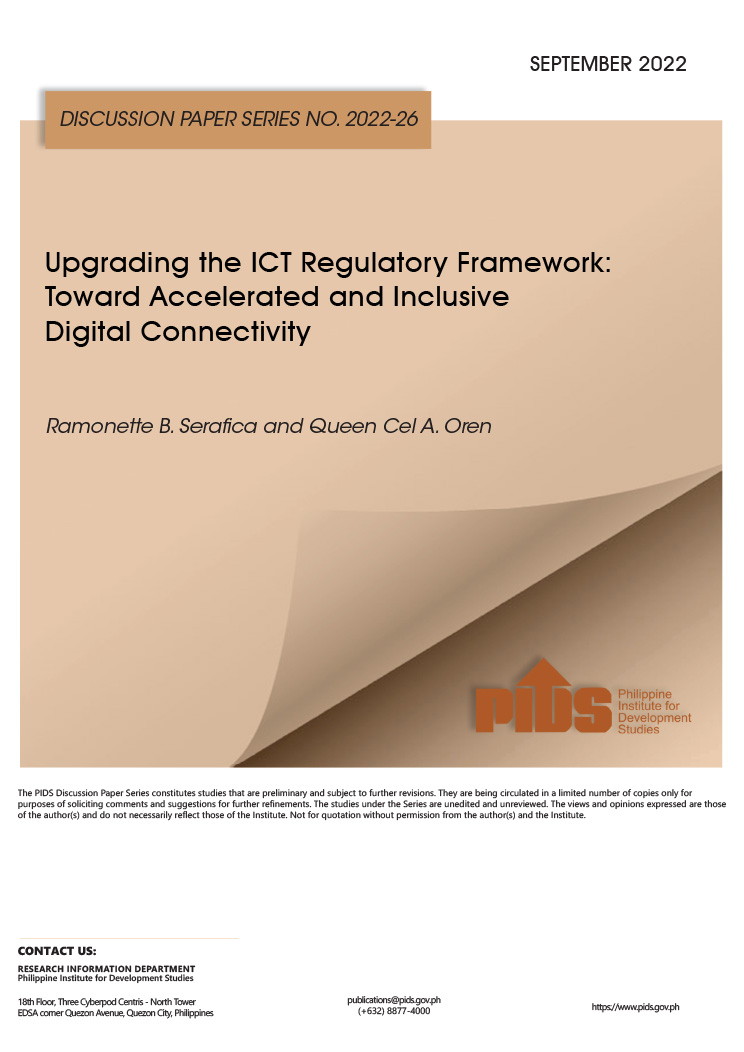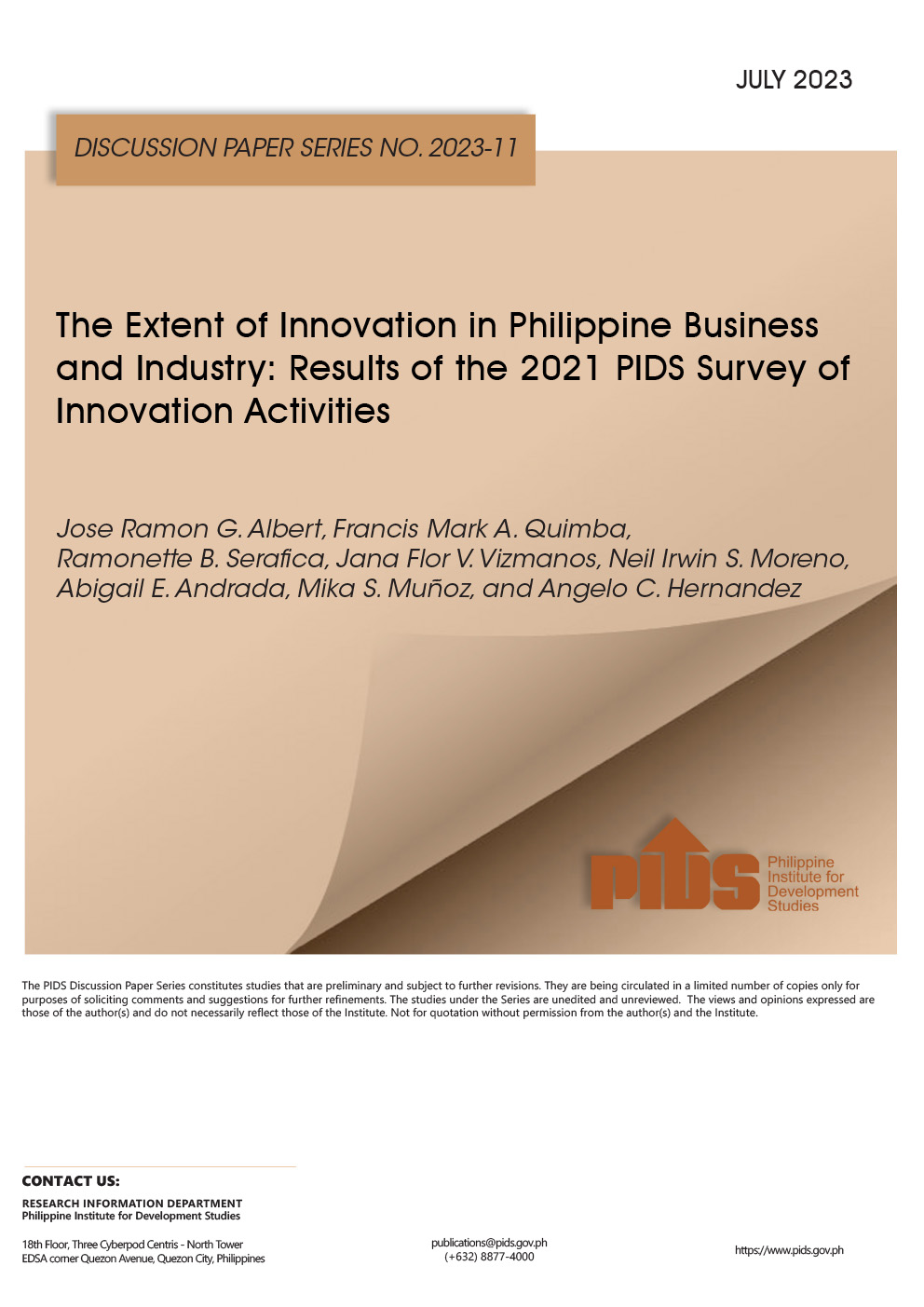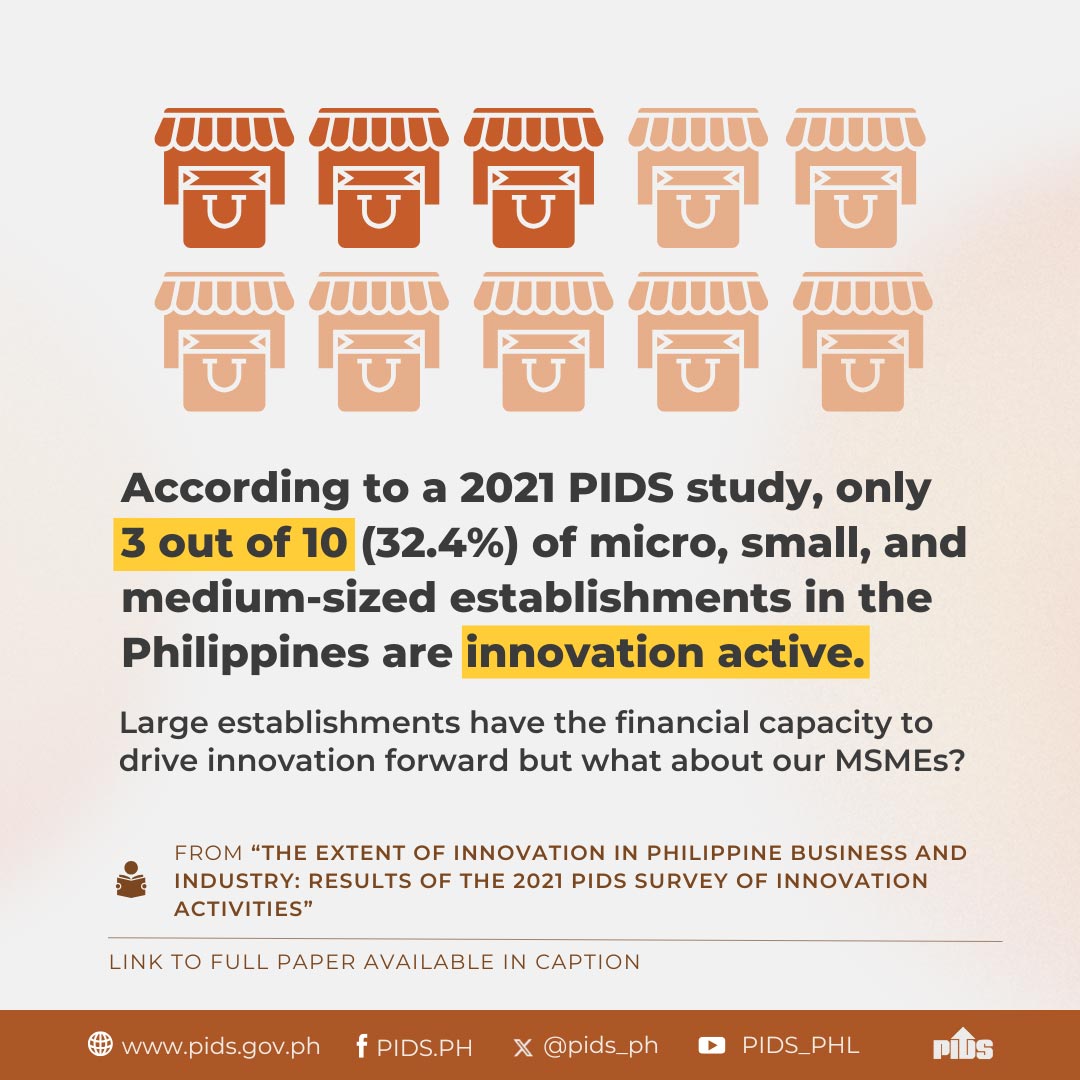
Data science and analytics (DSA) skills remain underdeveloped in the Philippines despite an increasing demand for DSA professionals with the advent of the Fourth Industrial Revolution (FIRe).
This was according to a study published by state think tank Philippine Institute for Development Studies (PIDS) titled, “Aligning higher education with demands for data science workforce”, and authored by PIDS consultants Brenda Quismorio, Maria Antonette Pasquin, and Claire Tayco.
Based on the undergraduate degrees of current DSA practitioners in the country, the study found that the “top 10 of these undergraduate degrees were considered as DSA-related programs.” These include computer science, business administration, statistics, mathematics, information technology, library and information science, economics, physics, industrial engineering, and civil engineering. Among these, business administration, information technology, and computer science were the most offered programs by higher education institutions (HEIs), while “very few HEIs offer other DSA-related programs.”
“DSA is at the very nascent stage in the Philippines,” the authors said, noting that company executives have to be convinced first that “data is the new ‘oil’ of the organization” for them to realize the need for DSA professionals.
There are four identified DSA job roles: data steward, data engineer, data scientist, and functional analyst. The authors noted that majority of the demand in 2019 was for the functional analyst role at 66 percent followed by the data engineer role at 20 percent.
However, they found a misalignment in the demand for DSA workers and supply of DSA professionals as HEIs mostly produced data engineers.
“Consistently, DSA-related degree programs equipped their graduates with the basic proficiency of the competencies that are required to perform the tasks of a data engineer or data scientist,” the authors explained.
This, according to the study, can be attributed to data science being at the infancy stage, and hence, “job roles are not particularized.”
“Employers also run the risk of failing to hire the right worker for the right set of tasks,” it added.
The study urged the government to work on appropriate mechanisms warning that “youth unemployment may exacerbate.”
One of the recommendations is to adopt the framework of the Analytics Association of the Philippines in defining DSA, as this could be a “starting point in aligning the demand and supply of DSA workers and competencies in the country.”
In particular, analytics companies can make use of this framework as basis for hiring and developing DSA talents.
The Commission on Higher Education (CHED) can also utilize the “framework in creating new standards for DSA degree programs or in updating its memorandum orders on DSA-related courses to accommodate DSA competencies as learning outcomes.”
“A common understanding of this emerging market for DSA workforce can benefit the different stakeholders,” the authors explained, adding that the government should “increase the public’s awareness of the DSA profession so students can choose a DSA career by taking related undergraduate programs.”
Another suggestion is to “promote government-industry-academe linkages”. For instance, the academe can collaborate with the industry in “improving curriculum, course design, and the delivery of instructions or in co-developing teaching materials.”
The study also encouraged companies to co-share in the cost of DSA education specifically in maintaining data laboratories as well as in obtaining hardware and software licenses.
Industry players can also help in faculty development through “faculty exchange programs and other industry research collaborations.”
Both academe and industry players are also urged to work with other government agencies such as the Department of Trade and Industry, Department of Information and Communications Technology, Department of Labor and Employment, and Department of Science and Technology to formulate policies and programs that will promote DSA. ###
This was according to a study published by state think tank Philippine Institute for Development Studies (PIDS) titled, “Aligning higher education with demands for data science workforce”, and authored by PIDS consultants Brenda Quismorio, Maria Antonette Pasquin, and Claire Tayco.
Based on the undergraduate degrees of current DSA practitioners in the country, the study found that the “top 10 of these undergraduate degrees were considered as DSA-related programs.” These include computer science, business administration, statistics, mathematics, information technology, library and information science, economics, physics, industrial engineering, and civil engineering. Among these, business administration, information technology, and computer science were the most offered programs by higher education institutions (HEIs), while “very few HEIs offer other DSA-related programs.”
“DSA is at the very nascent stage in the Philippines,” the authors said, noting that company executives have to be convinced first that “data is the new ‘oil’ of the organization” for them to realize the need for DSA professionals.
There are four identified DSA job roles: data steward, data engineer, data scientist, and functional analyst. The authors noted that majority of the demand in 2019 was for the functional analyst role at 66 percent followed by the data engineer role at 20 percent.
However, they found a misalignment in the demand for DSA workers and supply of DSA professionals as HEIs mostly produced data engineers.
“Consistently, DSA-related degree programs equipped their graduates with the basic proficiency of the competencies that are required to perform the tasks of a data engineer or data scientist,” the authors explained.
This, according to the study, can be attributed to data science being at the infancy stage, and hence, “job roles are not particularized.”
“Employers also run the risk of failing to hire the right worker for the right set of tasks,” it added.
The study urged the government to work on appropriate mechanisms warning that “youth unemployment may exacerbate.”
One of the recommendations is to adopt the framework of the Analytics Association of the Philippines in defining DSA, as this could be a “starting point in aligning the demand and supply of DSA workers and competencies in the country.”
In particular, analytics companies can make use of this framework as basis for hiring and developing DSA talents.
The Commission on Higher Education (CHED) can also utilize the “framework in creating new standards for DSA degree programs or in updating its memorandum orders on DSA-related courses to accommodate DSA competencies as learning outcomes.”
“A common understanding of this emerging market for DSA workforce can benefit the different stakeholders,” the authors explained, adding that the government should “increase the public’s awareness of the DSA profession so students can choose a DSA career by taking related undergraduate programs.”
Another suggestion is to “promote government-industry-academe linkages”. For instance, the academe can collaborate with the industry in “improving curriculum, course design, and the delivery of instructions or in co-developing teaching materials.”
The study also encouraged companies to co-share in the cost of DSA education specifically in maintaining data laboratories as well as in obtaining hardware and software licenses.
Industry players can also help in faculty development through “faculty exchange programs and other industry research collaborations.”
Both academe and industry players are also urged to work with other government agencies such as the Department of Trade and Industry, Department of Information and Communications Technology, Department of Labor and Employment, and Department of Science and Technology to formulate policies and programs that will promote DSA. ###












